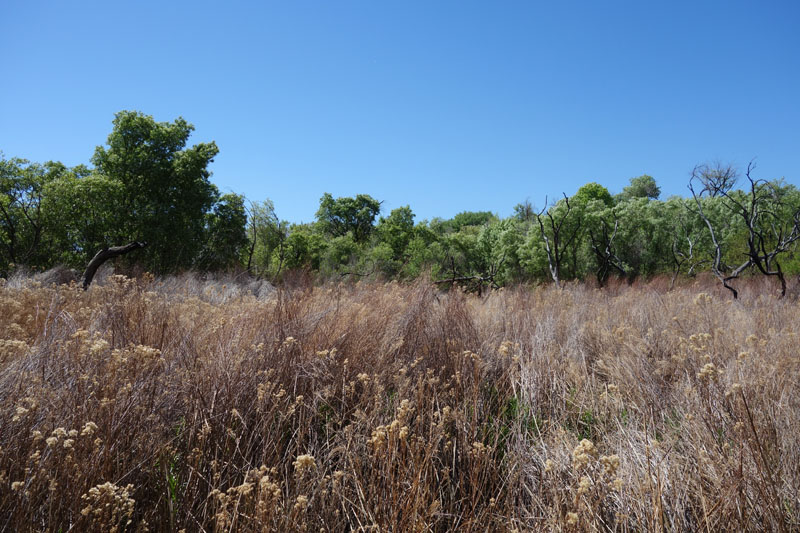We humans have an extraordinary ability to communicate. Not communication by speaking or body language; but communication through other mediums such as narratives, poems, music, painting, music, sculptures, etc. We can capture the essence of our feelings, sight, smell, sounds, textures and unlimited emotions and thoughts. We can communicate satisfaction, achievement, joy or even sadness. Walking in wild places brings out many of these things and the best in us.
Often when I return from a hike, people don’t ask me what I saw; what I felt; was I warm or cold; was it wet or dry; or did I have fun.
Most of the time people ask me, “How far did you hike?”
This is part of our communication – the ability to measure. In today’s world we measure everything, and often these measures communicate valuable information. But when it comes to backpacking, it can mean little. For example, hiking 30 miles on a well groomed flat trail versus 5 miles through boulder fields, or 15 miles with a 10,000 foot elevation gain communicates much more to the experienced walker, than 30 miles or 5 miles or 15 miles to the non-walker.
Other measures that are important to many hikers is the weight of the pack and gear, weight of food and water, calories per ounce of food, grams of fat, protein, or carbohydrates. And many hikers worry day and night about these measures before, during, and after a trip. So how do I deal with these logistical measures?
Time
My focus is on the number of hours I want to hike each day. Then given the time of year, terrain, and route, I can plan my trip. Normally I hike 8 to 12 hours a day depending on the time of year. I don’t particularly care to hike at night. Additionally, I don’t care to walk for hours on end eating and drinking as I travel. I stop once each 60 – 120 minutes (dependent on the trip) to rest, snack and drink. So the 8 – 12 hours per day could be 6 – 10 hours of actual walking. Some trips I can measure progress in miles per hour and other trips are measured in hours per mile. Some days I cover 30+ miles and others 5 miles.
Distance
Knowing how many hours per day I will hike on any given trip, combined with the type of terrain I plan to cover, I can devise my route. When hiking on established trails, it is easy to plan. But cross-country hikes over unfamiliar territory can be difficult. Topographical maps normally show the type of terrain and elevation of the terrain. However, most maps only show differences in 40-foot increments, and what looks like fairly flat land can be a gauntlet of roller-coaster ups and downs – up and downs with rocks, boulders, and brush that can slow the hike to a crawl; and put the hiker in jeopardy if miscalculations cause him or her to misjudge the time and effort it takes to get to milestone points, especially water.
There are tools (electronic or mechanical) the hiker can use to estimate distances, such as plotting a route on an electronic map, or a mechanical measuring device that is rolled over a paper map. I normally don’t use either. I estimate the distance on my paper map in inches and use the legend to estimate the distance. Depending upon the expected terrain I might multiply the distance by 1 – 2 times the rough guess. So on most trips I will estimate my hike in terms like, 26 – 30 miles. Often I plan the worst case (e.g. max distance I can cover is 10 miles), and if the walking is easier than expected I have identified interesting side trips I can take to fill in the day.
To complete a planned route, I change the number of days needed… not change the route to meet a specific number of days. I can always find extra days to hike.
Weight
The smart hiker will try to carry as little weight as possible with a skilled eye to staying safe, dry, and warm. Many hikers spend most of their pre-trip planning trying to assemble the lightest kit possible. My methodology is to check off the items I need for the specific trip using a spreadsheet. Once checked, the weights are calculated for me. At this point, what it weighs what it weighs. If I have picked the correct gear, it would be an exercise in futility to try and tweak needed gear to meet some arbitrary pack weight.
An example of this is what I went through on a recent trip. There would only be one water source over the course of a two day trip, approximately at the half-way point of the hike. Additionally the weatherman kept changing the forecast each day… predicted high temperatures changed from 102F to 87F and kept going back and forth each day. For me, I would need twice as much water at 102 degrees than at 87 degrees. This meant my water weight could vary by as much as 8.3 lbs. At 102F, I would need a much heavier backpack to carry the added water weight, but I would need a much lighter sleeping bag or quilt. Now add the chance of precipitation, which changed daily, the gear and weight needed, varied considerably for this short trip. Depending on the forecast the day before the trip, my gear could weigh anywhere from 3 to 10 pounds. The final kit ended up weight 3lbs 7 ounces excluding food and water.
This particular trip was a good one. I enjoyed varied terrain, plant life, and panoramic views. And the only question several people asked was,
“How far did you hike?”
